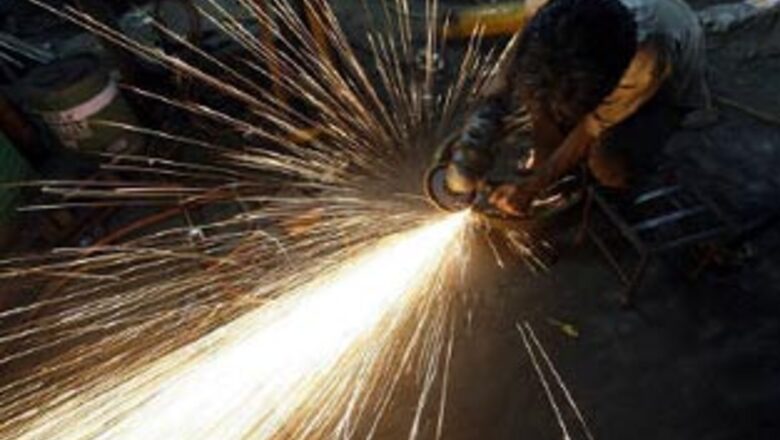
views
Mumbai: India's economic slowdown unexpectedly eased in the first quarter as expansion in construction, financial services and agriculture offset a slide in manufacturing, according to government figures Friday.
Asia's third-biggest economy grew 5.8 per cent from a year earlier in the first three months of 2009, the same rate as the previous quarter, and much better than many economists had expected.
Growth for the fiscal year ended March slowed to 6.7 per cent from 9 per cent the previous year — its slowest rate since the 2003 fiscal year — but markets cheered the better-than-expected quarterly figure.
The benchmark Sensex index rose 2.2 per cent, or 315.58 points, to 14611.59 in midday trade.
India's new government says kickstarting the economy — hard hit by the global recession — is its top priority. It plans to implement economic reforms and continue with stimulus spending.
Finance, construction, and agriculture all grew at a faster rate during the quarter, while manufacturing contracted.
"That was a bit counterintuitive because of the global financial turmoil," said Sherman Chan, an economist at Moody's Economy.com in Sydney.
She attributed financial services sector resilience to India's robust domestic economy and relatively insulated economy. National elections, which concluded this month, may also have spurred economic activity, she said.
Finance, insurance and real estate expanded by 9.5 per cent in the January-March quarter, faster than the 8.3 per cent growth clocked in the previous quarter.
Construction also overcame its doldrums, with quarterly growth rising to 6.8 per cent from 4.2 per cent.
Agriculture, India's largest source of employment, grew 2.7 per cent from a year earlier, reversing a 0.8 per cent contraction in the October-December quarter.
Manufacturing continued to slide. It shrank by 1.4 per cent, down from 0.9 per cent growth the prior quarter.
For the fiscal year ended March, government spending and investment underpinned growth.
Government expenditure rose to 11.1 per cent of gross domestic product for the year ended March, up from 9.8 per cent the prior year. Private consumption shrank to 55.5 per cent of GDP, from 57.2 per cent, and gross fixed capital formation — a measure of investment — rose to 32.2 per cent from 31.6 per cent.
Chan said that government spending is not sustainable and that ultimately private consumption and investment will have to lead growth.
Government debt stands at 80 per cent of GDP — a level that worries investors, she said.
"I'm expecting government spending to be scaled back significantly once the global turmoil is over," she said. "The fiscal position is weak."



















Comments
0 comment